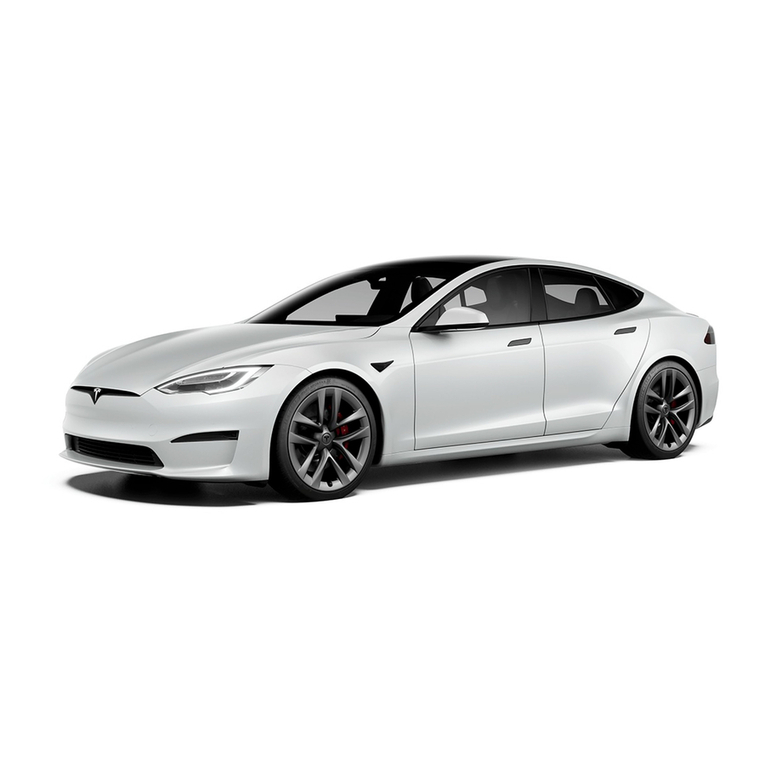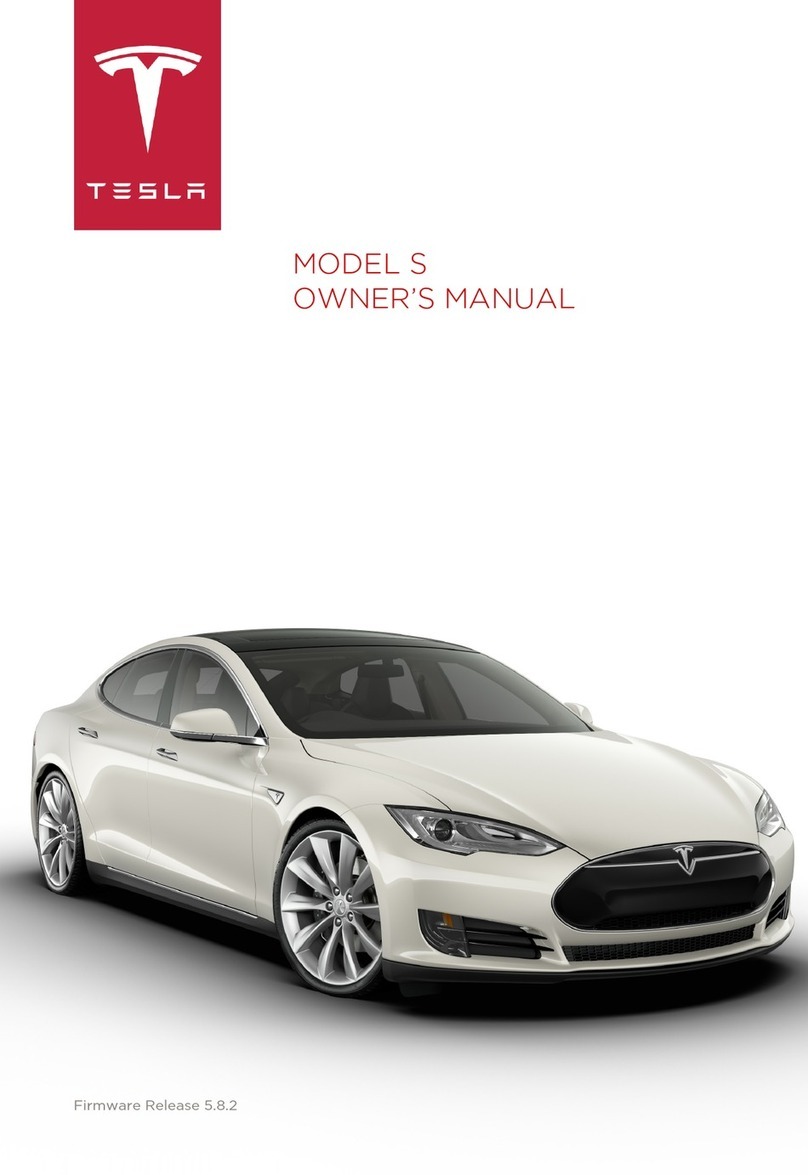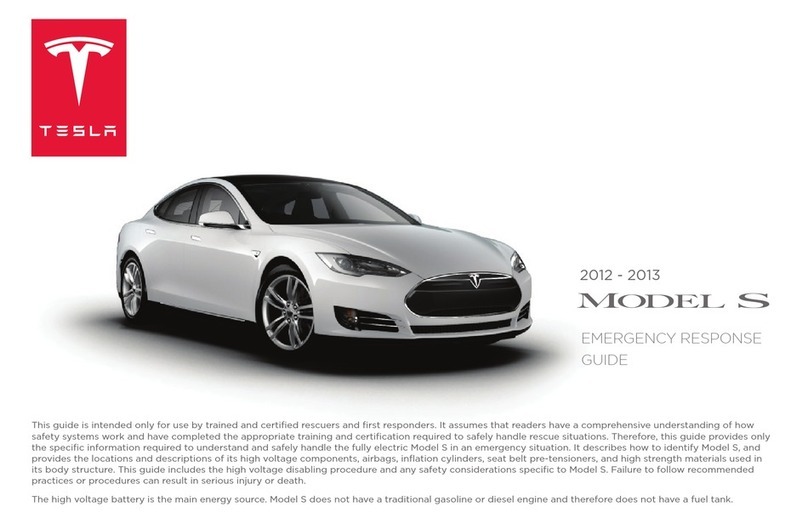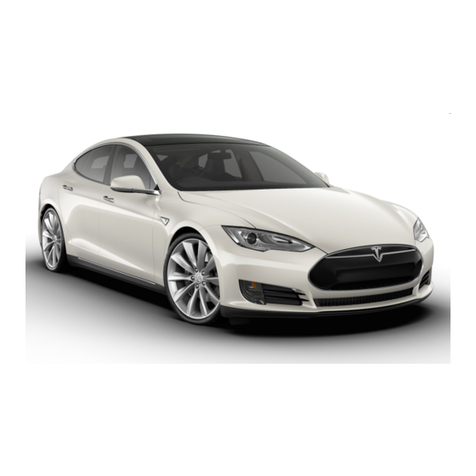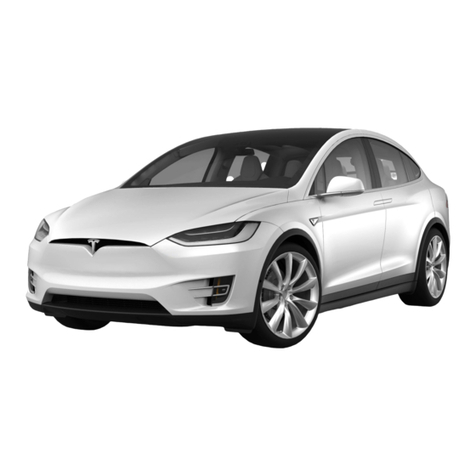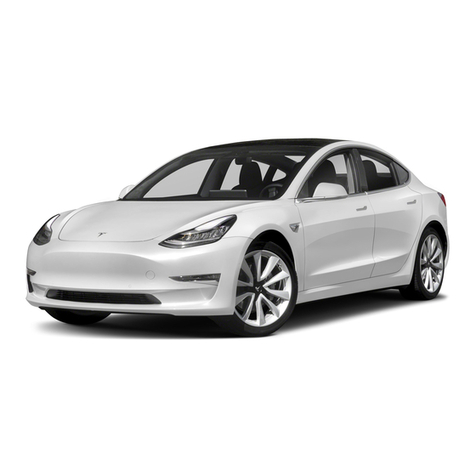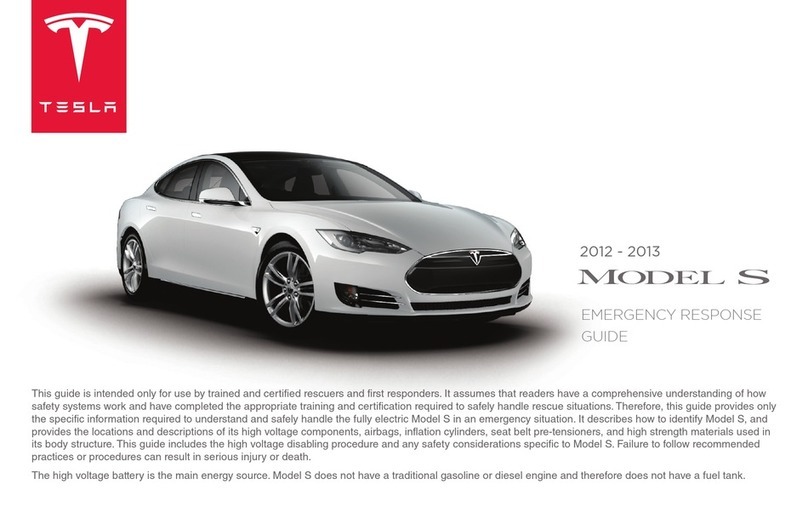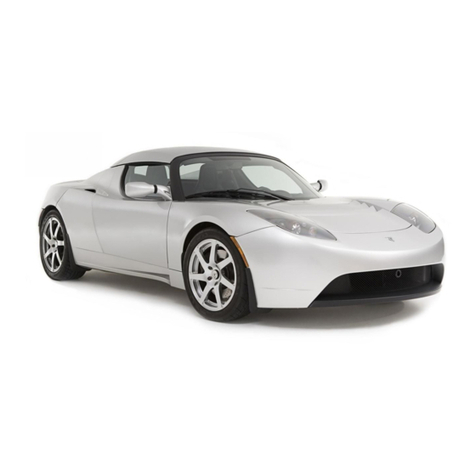Overview............................................2
Interior Overview........................................................................ 2
Exterior Overview.......................................................................3
Opening and Closing.....................4
Doors............................................................................................... 4
KeylessLockingandUnlocking4UsingtheKey4UsingExteriorDoorHandles5UsingInteriorDoorHandles6InteriorLockingandUnlocking6Child-protectionLock6Drive-awayLocking6Walk-awayLocking6UnlockingWhentheKeyDoesn'tWork7OpeningInteriorDoorswithNoPower7 Windows........................................................................................ 8
OpeningandClosing8LockingRearWindows8 Rear Trunk..................................................................................... 9
Opening9Closing9AdjustingtheOpeningHeight9InteriorRelease10OpeningwithNoPower10 Front Trunk...................................................................................11
Opening11Closing11InteriorEmergencyRelease12OpeningwithNoPower12 Glove Box..................................................................................... 13
OpeningandClosing13 Sunroof..........................................................................................14
OpeningandClosing14 Cup Holders.................................................................................15
OpeningandClosing15
Seating and Safety
Restraints......................................... 16
Front and Rear Seats...............................................................16
CorrectDrivingPosition16AdjustingtheDriver’sSeat16FoldingRearSeats17RaisingRearSeats17HeadSupports17SeatCovers17 Seat Belts......................................................................................18
WearingSeatBelts18WearingSeatBeltsWhenPregnant18SeatBeltPre-tensioners19TestingSeatBelts19SeatBeltWarnings20 Child Safety Seats..................................................................... 21
GuidelinesforSeatingChildren21ChoosingaChildSafetySeat21SeatingLargerChildren23InstallingChildSafetySeats23InstallingSeatBeltRetainedChildSeats23InstallingLATCHChildSeats24AttachingUpperTetherStraps25TestingaChildSafetySeat25Warnings-ChildSafetySeats26 Tesla Built In Rear Facing Child Seats..............................27
UsageRestrictions27Opening27Storing28SeatingaChild29Warnings-TeslaChildSeats30 Airbags.......................................................................................... 31
LocationofAirbags31HowtheAirbagsWork32TypesofAirbags32PassengerFrontAirbag33InflationEffects34AirbagWarningIndicator34AirbagWarnings34
Driving.............................................. 35
Driver Profiles............................................................................ 35
CreatingaDriverProfile35RestoringaDriver’sProfile35SavedDriverSettings35 Steering Wheel..........................................................................36
AdjustingPosition36AdjustingSensitivity36UsingLeftSteeringWheelButtons36UsingRightSteeringWheelButtons37UsingVoiceCommands37Horn38 Mirrors...........................................................................................39
AdjustingExteriorSideMirrors39RearViewMirror39 Starting and Powering Off................................................... 40
StartingModelS40PoweringOff40 Gears.............................................................................................. 41
ShiftingGears41LeavingModelSinNeutral-TowMode41 Instrument Panel.......................................................................42
InstrumentPanelOverview42IndicatorLights43 Lights............................................................................................ 47
ControllingLights47HeadlightHighBeams49HeadlightsAfterExit49CorneringLights49TurnSignals50HazardWarningFlashers50 Wipers and Washers................................................................51
Wipers51Washers51 Park Assist...................................................................................52
HowParkAssistWorks52VisualandAudioFeedback52ControllingAudibleFeedback52LimitationsandFalseWarnings52OtherParkingAids53 Trip Information........................................................................54
DisplayingTripInformation54 Getting Maximum Range.......................................................55
DrivingTipstoMaximizeRange55SavingEnergy55 Brakes........................................................................................... 56
BrakingSystems56BrakeWear56RegenerativeBraking57ParkingBrake57 Traction Control........................................................................58
HowItWorks58 Cruise Control............................................................................59
OperatingCruiseControl59ChangingtheCruisingSpeed59CancelingandResuming60 Hill Start Assist........................................................................... 61
Rear View Camera................................................................... 62
CameraLocation62
Using the Touchscreen.............. 63
Touchscreen Overview.......................................................... 63
TheBigPicture63 Controls........................................................................................65
ControllingModelSFeatures65 Settings........................................................................................ 67
CustomizingModelS67 Climate Controls.......................................................................70
OverviewofClimateControls70CustomizingClimateControl71Ventilation72ClimateControlOperatingTips72 Smart Air Suspension............................................................. 73
ManualHeightAdjustments73AutomaticHeightAdjustments73JackMode73 Media and Audio.......................................................................74
Overview74XMRadio74InternetRadio74Favorites75MyMusic&Devices75USBConnections7612VPowerSocket76 Phone............................................................................................ 77
Bluetooth®Compatibility77PairingaBluetoothPhone77ImportingContacts77UnpairingaBluetoothPhone77ConnectingtoaPairedPhone78MakingaPhoneCall78ReceivingaPhoneCall78InCallOptions78 Maps and Navigation.............................................................. 79
Overview79UsingMaps79StartingNavigation79DuringNavigation79FavoriteDestinations80 Security Settings....................................................................... 81
AbouttheSecuritySystem81 HomeLink®Universal Transceiver.......................................82
AboutHomeLink®82ProgrammingHomeLink®82 Connecting to Wi-Fi................................................................83
Software Updates.................................................................... 84
LoadingNewSoftware84ViewingReleaseNotes84 Mobile App..................................................................................85
ModelSMobileApp85
Charging..........................................86
Electric Vehicle Components.............................................. 86
HighVoltageComponents86ChargingEquipment87 Battery Information.................................................................88
AbouttheBattery88BatteryCare88 Charging Model S.....................................................................89
OpeningtheChargePort89PluggingIn89DuringCharging90StoppingCharging90ChargePortLight90ChangingChargeSettings91ChargingStatus92
Maintenance...................................93
Maintenance Schedule........................................................... 93
ServiceIntervals93DailyChecks93MonthlyChecks93FluidReplacementIntervals93HighVoltageSafety93 Tire Care and Maintenance.................................................. 94
MaintainingTirePressures94InspectingandMaintainingTires95ReplacingTiresandWheels96UsingTireChains97TirePressureMonitoring97 Temporary Tire Repair...........................................................99
TireRepairKit99InflatingwithSealantandAir100InflatingwithAirOnly101ReplacingtheSealantCanister102 Cleaning..................................................................................... 103
CleaningtheExterior103CleaningtheInterior104Polishing,TouchUp,andBodyRepair105UsingaCarCover105FloorMats105 Wiper Blades and Washer Jets.........................................106
CheckingandReplacingWiperBlades106CleaningWasherJets107 Fluid Reservoirs.......................................................................108
RemovingtheMaintenancePanel108CheckingBatteryCoolant108CheckingBrakeFluid109ToppingUpWasherFluid110 Fuses..............................................................................................111
FuseBoxLocations111ReplacingaFuse111FuseBox1112FuseBox2114FuseBox3116FuseBox4117 Jacking and Lifting..................................................................118
JackingProcedure118 Parts and Accessories............................................................119
Parts,Accessories,andModifications119BodyRepairs119
Specifications...............................120
Identification Labels.............................................................. 120
VehicleIdentificationNumber120EmissionControlLabel120 Vehicle Loading........................................................................121
LoadCapacityLabeling121CalculatingLoadLimits122TowingaTrailer123 Dimensions and Weights.....................................................124
ExteriorDimensions124Weights124 Subsystems............................................................................... 125
Motor125Transmission125Steering125Brakes126Suspension126Battery-12V126Battery-HighVoltage127 Wheels and Tires.....................................................................128
WheelSpecifications128WheelAlignmentValues128TireSpecifications129UnderstandingTireMarkings130UniformTireQualityGrading132WheelsandTiresGlossary133
Roadside Assistance................. 134
About Roadside Assistance................................................134
ContactingRoadsideAssistance134 Instructions for Transporters..............................................135
UseaFlatbedOnly135DisableSelf-Leveling(airsuspensionvehiclesonly)135ActivateTowMode135ConnecttheTowChain136PullOntotheTrailerandSecuretheWheels137
Consumer Information..............138
Disclaimers................................................................................ 138
VehicleTelematics/DataRecorders138QualityControl138AboutthisOwnerInformation138CaliforniaProposition65139 Reporting Concerns.............................................................. 140
ContactingTesla140ReportingSafetyDefects-US140ReportingSafetyDefects-Canada140 Declarations of Conformity..................................................141
KeyandPassiveUnlockingSystem141TirePressureMonitoringSystem141HomeLink141RadioFrequencyInformation141
Contents
